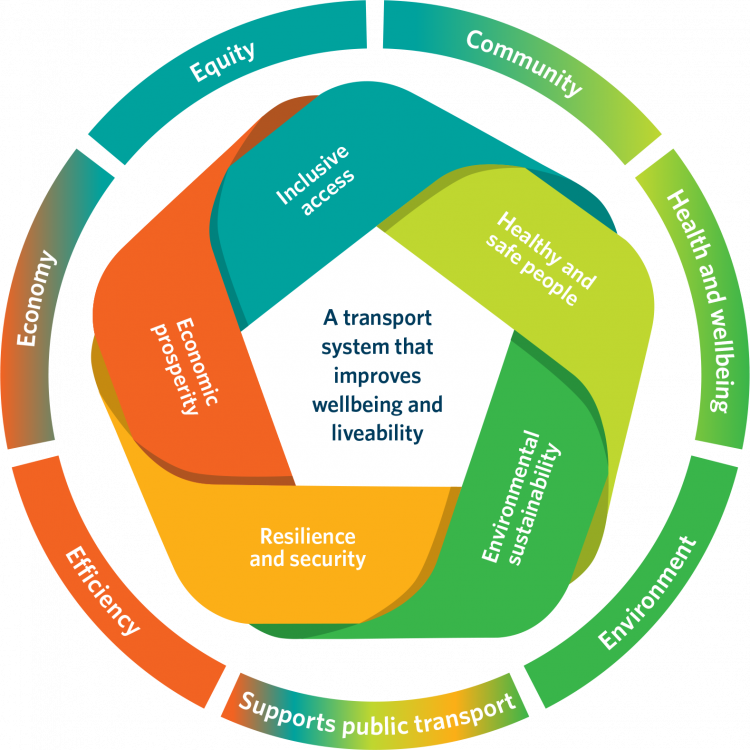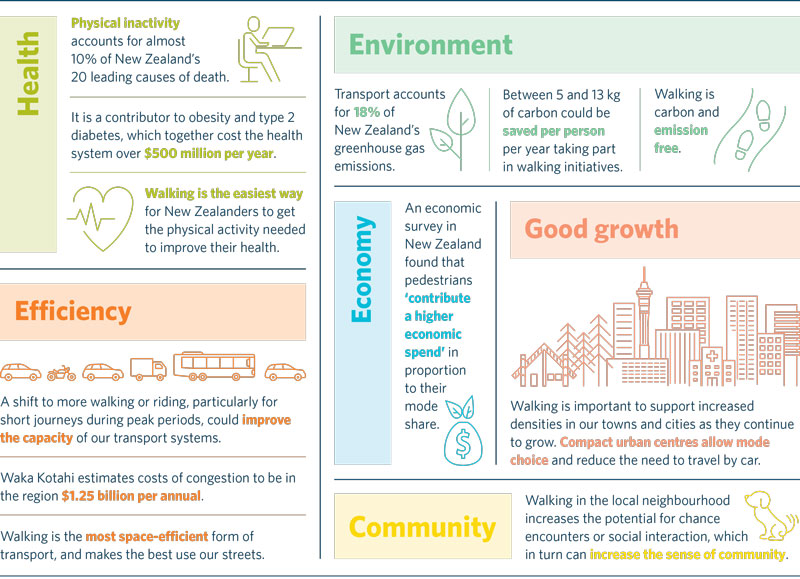There are seven main benefits to walking, many of which overlap:

How the benefits of walking (outer shapes) relate to the Transport Outcomes Framework.[1]
The following seven sections describe how walking relates to the benefit areas. In terms of resilience and security, walking is obviously an important mode in times of natural disaster or pandemic.
Equity
Equity means that the benefits of investment in transport are distributed such that all people are able to participate in society.
Environment
Supporting a move to cleaner, healthier and more active transport modes like walking is key to address the issues of climate change.
Efficiency
Walking is the most space-efficient form of transport, and makes the best use of our streets.
Health and wellbeing
Many trips start and end with walking. This has been long acknowledged in health studies, where walking is considered the keystone to promote healthier lifestyles based on physical activities.
Community
Walking can equitably allow people to access employment, community services, and natural environments, building a sense of community.
Economy
New Zealand has one of the highest rates of car ownership in the world.
Supports public transport
A good public transport system relies on an efficient public transport network.
The following infographic can be used when engaging with the community, it communicates the key benefits of walking in plain language and uses New Zealand statistics and facts.

Engaging the community about benefits of walking.
The design of our urban environment influences our mode choices: